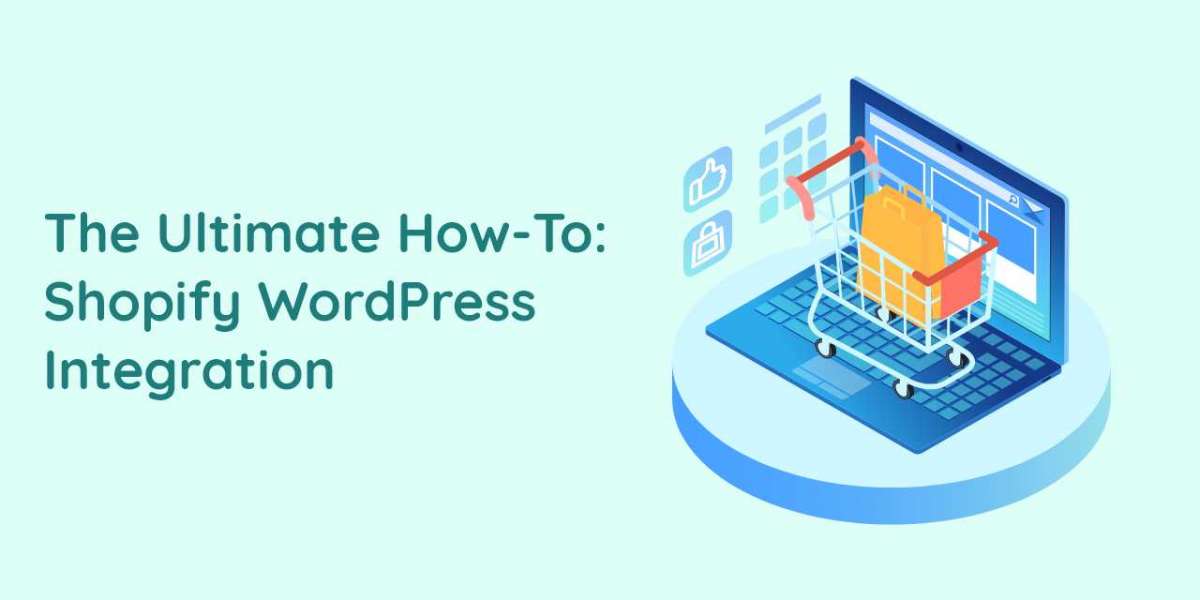Combining the e-commerce power of Shopify with the content management flexibility of WordPress can create a dynamic online presence. Shopify is renowned for its robust e-commerce capabilities, while WordPress is a versatile platform for managing content and driving engagement. Integrating these two platforms allows you to leverage the strengths of each, creating a seamless and efficient online shopping experience. This guide will walk you through the process of integrating Shopify with WordPress effectively.
1. Set Up Your Shopify Store
The first step is to establish a functional Shopify store:
- Sign Up for Shopify: Visit the Shopify website and create an account. Choose a plan that suits your business needs, whether you're starting small or scaling quickly.
- Configure Your Store: Follow the initial setup wizard to add essential details like products, payment gateways, and shipping options. This setup will ensure your store is fully operational and ready for integration.
2. Choose the Right Integration Method
There are several methods to integrate Shopify with WordPress, each offering different levels of functionality:
- Shopify Buy Button: This is a straightforward method that allows you to embed products directly into your WordPress site.
- Shopify Plugins for WordPress: Plugins offer advanced integration features, such as syncing products between Shopify and WordPress.
- Custom API Integration: For a more tailored approach, you can use Shopify’s API to create a custom integration.
3. Install the Shopify Buy Button
The Shopify Buy Button is an excellent way to start integrating Shopify into your WordPress site:
- Generate the Buy Button: Log in to your Shopify admin panel, navigate to Sales Channels, and select Buy Button. Click Create a Buy Button and choose the product or collection you want to feature.
- Customize the Button: Adjust the button’s appearance to align with your WordPress site’s design. You can modify colors, styles, and layout.
- Get the Embed Code: Shopify will generate an embed code for the Buy Button. Copy this code for use in WordPress.
4. Embed the Buy Button in WordPress
To embed the Buy Button:
- Log In to WordPress: Access your WordPress admin dashboard.
- Select the Page or Post: Choose the page or post where you want to display the Shopify Buy Button.
- Insert the Code: Use the Custom HTML block in the block editor to paste the Shopify Buy Button embed code.
- Publish or Update: Save your changes and publish or update the page.
The Buy Button will now appear on your WordPress site, allowing users to purchase products directly from Shopify.
5. Use Shopify Plugins for Advanced Integration
For more advanced functionality, consider using Shopify plugins:
- Shopify Connect for WooCommerce: This plugin allows you to sync products between Shopify and WooCommerce, providing a more integrated experience.
- Shopify eCommerce Plugin: Offers features like product embedding, cart management, and enhanced customization.
To install a plugin:
- Go to Plugins: In your WordPress dashboard, navigate to Plugins and click Add New.
- Search and Install: Search for the desired plugin, click Install Now, and then Activate.
- Configure the Plugin: Follow the plugin’s setup instructions to connect your Shopify store and configure settings.
6. Customize the Integration
Customize the integration to fit your site’s design and user needs:
- Design Adjustments: Edit CSS or use customization options provided by the Buy Button or plugins to match your site’s aesthetics.
- Product Categories and Filters: Configure categories and filters to improve product discovery and shopping experience.
7. Test the Integration Thoroughly
Before launching, conduct comprehensive testing:
- Verify Product Listings: Ensure that products are displayed correctly and the Buy Button functions as intended.
- Test Transactions: Perform test purchases to confirm that the checkout process and payment handling are smooth.
- Check Mobile Responsiveness: Make sure the integration works well on mobile devices, providing a seamless experience across all platforms.
8. Monitor and Optimize
Once integrated, regularly monitor and optimize the performance of your Shopify and WordPress integration:
- Analyze Performance: Use Shopify and WordPress analytics to track sales, user behavior, and site performance.
- Gather User Feedback: Collect feedback to identify any issues or areas for improvement.
- Update Regularly: Keep both Shopify and WordPress updated to ensure compatibility and security.
Conclusion
Integrating Shopify with WordPress combines the best of both platforms, creating a powerful and versatile online presence. By following this guide—setting up Shopify wordpress integration, choosing the right integration method, embedding Buy Buttons, using plugins, customizing the experience, testing thoroughly, and monitoring performance—you can create a seamless and effective e-commerce solution. This integration not only enhances the shopping experience for users but also supports your business’s growth and success in the digital marketplace.






